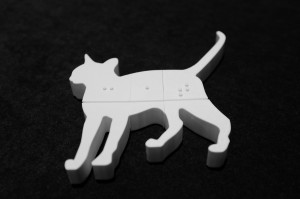The amazing aspect of writing about 3D printing is that a new application is not just news but often opens the door onto a new paradigm of potential applications. Sometimes they are obvious, other times they become obvious as one considers the idea and its implications. Fittle, a 3D printing application created to help the visually impaired learn Braille language, belongs to the second kind. It is the kind that makes you say “Wow”.
This is not the first 3D printing project that aids and/or supports visually impaired people, just last week, Evan reported on an inclusive artistic application. 3D printing can totally change the life of anyone with visual disabilities and that makes perfect sense because a physical medium is perfect for someone that needs to use other senses, primarily the sense of touch, to make up for their visual impairment.
Indian post graduate student Tania Jain’s Fittle project considers this and one other fundamental assumption: the fact that visually impaired children who are able to read the Braille alphabet can become more proficient in school than those who do not. In fact the NFB (the US National Federation of the Blind) reports that “Braille-using students/children, who generally have less vision, are often better equipped to keep pace in a regular classroom than their partially sighted peers who do not use Braille. This is because Braille is an effective reading medium; it allows access to virtually all print materials and enables students to read quickly and without fatigue.”

To hear the correct pronunciation of the word, Fittle also comes with an app (as in iPhone App). Arguably the most fun part for the children, working together with parents and educators, might be the actual 3D printing. They may not be able to do it all by themselves but it will help them familiarize with a skill that will become more and more useful in the years to come.

So far, four open source models have been released: the most famous of which is a fish, made up of four pieces, each of which has a letter in Braille on its upper side. The others, a Fittle car, a Fittle bat (as in baseball bat) and a Fittle Train, are all available as free downloads from Thingiverse. At the end of last year Fittle also teamed up with social 3D printing network 3D Hubs to reach out to its current circa 1,500 subscribers to help people, who have, know or work with children with visual disabilities, to help them get access to Fittle, even if they do not own a 3D printer.




